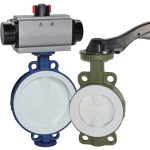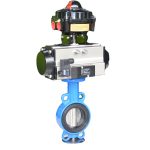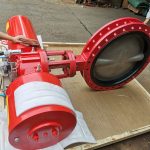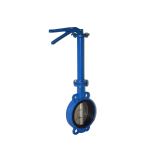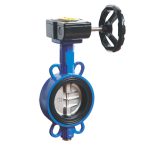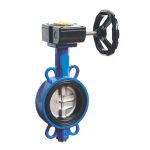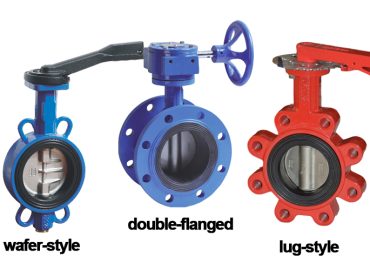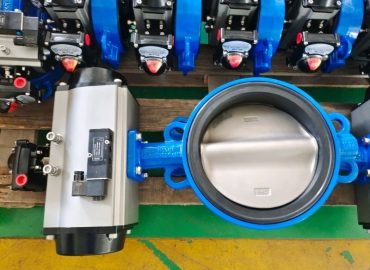Gate valves and butterfly valves are two of the most commonly used valves in pipelines and industrial applications. While they may both serve the same basic function of controlling the flow of fluid in a system, there are significant differences between the two that make them each better suited for certain scenarios. Understanding these differences is crucial to selecting the appropriate valve for a specific application. In this blog post, we will explore the characteristics, advantages, and disadvantages of gate valves and butterfly valves, and highlight the key factors to consider when choosing between the two.
Introduction
When it comes to valves, gate valve and butterfly valve have distinct differences in terms of design, construction, and operation. Gate valves have a simple yet robust design that utilizes a gate or wedge-shaped disc to control the flow of fluid. When the valve is open, the gate is lifted out of the way to allow fluid to pass through. When the valve is closed, the gate is lowered back down to obstruct the flow. Gate valves offer a high degree of shutoff capability, making them ideal for applications where tight sealing is necessary. They are also durable and can handle high pressure and temperature ranges. However, gate valves are not suitable for throttling applications because they are designed to be either fully open or fully closed. On the other hand, butterfly valves use a disc or vane that is positioned perpendicular to the flow of fluid to regulate the flow. When the valve is open, the disc rotates to allow fluid to pass through. When the valve is closed, the disc rotates again to create a seal. Butterfly valves are smaller and lighter than gate valves, making them easier to install and operate. They are also better suited for throttling applications because they can be adjusted to control the flow of fluid. However, butterfly valves may not provide the same level of shutoff capability as gate valves and may be prone to leakage when used at high pressures. Ultimately, the choice between gate valves and butterfly valves will depend on the specific needs of the application, such as the required level of shutoff, pressure and temperature ranges, and whether throttling capability is necessary.
Brief explanation of what gate valve and butterfly valve are
Gate valve and butterfly valve are types of flow control valves used in industrial applications to regulate the flow of fluids such as water, gas, oil, and chemicals through pipelines. A gate valve is a type of linear motion valve that operates by lifting or lowering a gate-shaped disc to block or allow flow through the valve. This type of valve is typically used for fully opening or fully closing the flow of fluid. A butterfly valve, on the other hand, is a type of quarter-turn rotary motion valve that uses a disc or vane positioned perpendicular to the flow of fluid to control flow rate. Butterfly valve can be used for both fully opening and throttling applications. Both gate valve and butterfly valve have their distinct advantages and disadvantages, which make each one better suited for specific applications.
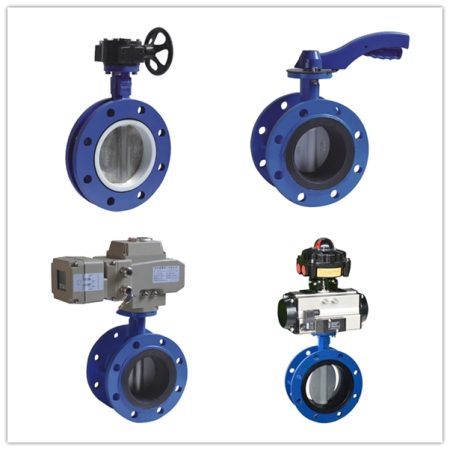
Importance of understanding the differences between the two
Understanding differences between gate valve and butterfly valve is important for selecting the appropriate valve for a specific application. The wrong choice of valve can result in poor system performance, reduced efficiency, increased maintenance costs, and even safety hazards. For example, a gate valve may not be effective in applications where throttling is required, while a butterfly valve may not provide the necessary level of shutoff required in high-pressure systems. By understanding the specific characteristics, advantages, and disadvantages of each valve type, engineers and operators can select the most suitable valve for their specific requirements, which can lead to better system performance, improved efficiency, and reduced maintenance costs. Additionally, selecting the appropriate valve can help prevent costly downtime, equipment damage, and safety hazards associated with improper valve selection.
Gate Valve
A gate valve is a type of linear motion valve commonly used in industrial applications to regulate the flow of fluids. Gate valves are designed with a gate or wedge-shaped disc that moves up and down perpendicular to the direction of the fluid flow. The disc is raised or lowered by turning a stem that is connected to a handwheel or actuator. When the valve is closed, the gate is lowered to obstruct the flow of fluid completely. When the valve is fully open, the gate is lifted out of the way to allow full flow. Gate valves have a simple yet robust design that makes them suitable for high-pressure and high-temperature applications. They also provide a high degree of shutoff capability, which is ideal for applications where tight sealing is necessary. Gate valves can be made from a variety of materials, including brass, bronze, cast iron, ductile iron, carbon steel, and stainless steel, depending on the application requirements. However, gate valves may not be suitable for applications where throttling is required, as they are designed to be either fully open or fully closed. Additionally, gate valves can be prone to corrosion and erosion, which can lead to leakage and reduced performance over time. Despite these limitations, gate valves remain one of the most widely used valves in the industry, particularly in applications such as water supply, oil and gas, chemical processing, and power generation.
Definition and function
A gate valve is a type of valve used in industrial applications to control the flow of fluids. It operates by raising or lowering a gate or wedge-shaped disc to block or allow the flow of fluid through the valve. The gate is moved up and down via a stem that is connected to a handwheel or actuator. When the valve is fully open, the gate is lifted out of the way to allow full flow of fluid. Conversely, when the valve is fully closed, the gate blocks the flow of fluid completely. This makes gate valves ideal for applications where tight shutoff is necessary. Gate valves can be used in a variety of industrial applications such as water supply, oil and gas, chemical processing, and power generation. They are typically used in systems where the flow of fluid needs to be completely shut off or fully opened, but may not be suitable for applications where throttling is required.
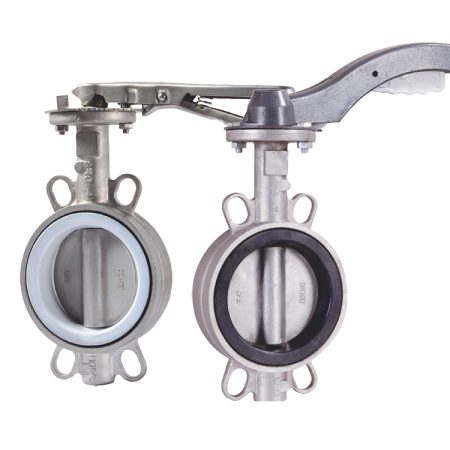
Design and construction
The design and construction of a gate valve can vary depending on the application. However, all gate valves share some common design and construction features. A gate valve typically consists of a body, a bonnet, a gate or wedge-shaped disc, a stem, and a handwheel or actuator. The body is the main housing of the valve and contains the fluid flow path. The bonnet is attached to the body and houses the stem and packing. The gate or wedge-shaped disc is the most critical component of the valve, as it controls the flow of fluid. The stem connects the gate or disc to the handwheel or actuator, allowing the operator to raise or lower the gate. Gate valves can be constructed from various materials, such as brass, bronze, cast iron, ductile iron, carbon steel, and stainless steel, depending on the application requirements. The materials used in the construction of the valve affect the performance, durability, and resistance to corrosion, erosion, and other factors that can impact the valve’s lifespan. Overall, the design and construction of a gate valve are crucial in ensuring its proper operation and reliability in the intended application.
Pros and cons
Like any other valve type, gate valves have their advantages and disadvantages. One of the main benefits of gate valves is that they offer a high degree of shutoff capability, making them ideal for applications where tight sealing is necessary. Gate valves are also durable and can handle high pressure and temperature ranges, which is essential in industrial applications. However, gate valves are not suitable for throttling applications because they are designed to be either fully open or fully closed. Additionally, gate valves can be prone to corrosion and erosion, which can lead to leakage and reduced performance over time. Maintenance and repair of gate valves can also be more challenging and time-consuming than other types of valves. Despite these limitations, gate valves remain one of the most widely used valves in the industry, particularly in applications such as water supply, oil and gas, chemical processing, and power generation, due to their reliability and durability. Proper selection and maintenance of gate valves can ensure their optimal performance and longevity in the intended application.
Common applications
Gate valves are widely used in various industrial applications where the flow of fluids must be completely shut off or fully opened. One of the most common applications of gate valves is in water supply and wastewater treatment systems, where they are used for controlling the flow of water and other liquids. In the oil and gas industry, gate valves are used to control the flow of crude oil, natural gas, and other petroleum products in pipelines and storage tanks. Gate valves are also commonly used in chemical processing plants, power generation facilities, and mining operations to regulate the flow of corrosive liquids, gases, and slurries. They are also used in HVAC systems, fire protection systems, and steam systems. Overall, gate valves are versatile and reliable valves that can be used in a wide range of industrial applications wherever precise flow control is required.
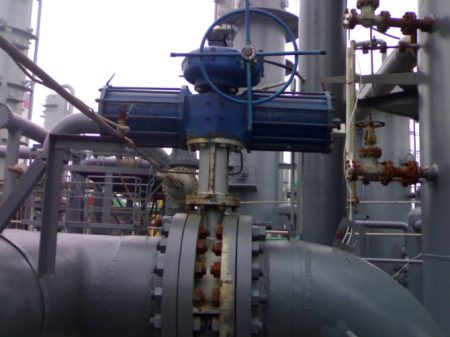
Butterfly Valve
Butterfly valves are a type of quarter-turn valve that is widely used in various industrial applications. They consist of a circular disc, or vane, that rotates about an axis perpendicular to the direction of fluid flow to regulate the flow of fluids. Butterfly valves can be operated manually, electrically, or hydraulically, and are designed to be either fully open or fully closed. One of the main advantages of butterfly valves is that they are compact and lightweight, making them easy to install and maintain. They also have a low-pressure drop, which reduces energy consumption and increases efficiency. Additionally, butterfly valves are cost-effective and have a long service life. However, butterfly valves may not be suitable for high-pressure and high-temperature applications, as the disc and stem can be prone to damage under extreme conditions. The sealing properties of butterfly valves are also not as reliable as other types of valves, which can result in leakage over time. Despite these limitations, butterfly valves are widely used in industries such as food and beverage, pharmaceuticals, water treatment, and HVAC systems. They offer a reliable and efficient means of regulating the flow of fluids in a variety of applications.
Definition and function
A butterfly valve is a type of quarter-turn valve commonly used in various industries to regulate and control the flow of fluids. The defining feature of a butterfly valve is its circular disc or vane, which rotates around an axis perpendicular to the fluid flow direction. The rotation of the disc either allows or restricts the flow, depending on the angle of the disc. The valve can be operated manually, electrically, or hydraulically, and is designed to be either fully open or fully closed. Butterfly valves are known for their compact size, lightweight design, and ease of installation. They function effectively in applications that require low-pressure drop and efficient flow control. However, they may not be suitable for high-pressure and high-temperature conditions due to the potential for damage to the disc and stem. Despite these limitations, butterfly valves are widely utilized across industries such as food and beverage, pharmaceuticals, water treatment, and HVAC systems for their reliable performance and cost-effectiveness.
Design and construction
The design and construction of butterfly valves focus on simplicity, efficiency, and compactness. A butterfly valve typically consists of a body, disc or vane, stem, and an actuator or handwheel. The body encloses the fluid flow path and can be designed in various configurations, such as wafer, lug, and flanged styles, to accommodate different types of connections and applications. The disc or vane is the central component that regulates the flow of fluid by rotating around a stem. The stem connects the disc to the actuator or handwheel, allowing for manual, electric, or hydraulic operation. Butterfly valves can be constructed using a range of materials, including cast iron, ductile iron, stainless steel, and plastic, depending on the application requirements and compatibility with the fluids being handled. The sealing mechanism of a butterfly valve can involve either elastomeric, PTFE, or metal-to-metal seals, each offering different levels of sealing performance and resistance to wear. Overall, the design and construction of butterfly valves prioritize space-saving, ease of installation, and cost-effectiveness while providing reliable flow control in various industrial applications.
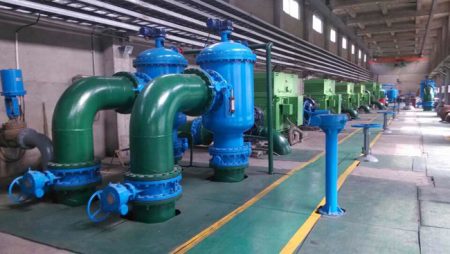
Pros and cons
Butterfly valves offer several advantages and disadvantages that make them suitable for specific applications. One of the primary benefits of butterfly valves is their compact and lightweight design, which simplifies installation and reduces space requirements. They also provide a low-pressure drop, contributing to increased energy efficiency and reduced operating costs. Butterfly valves are cost-effective compared to other valve types, making them an attractive option for budget-conscious projects. However, there are some limitations to butterfly valves. They may not be suitable for high-pressure and high-temperature applications, as the disc and stem can be susceptible to damage under extreme conditions. Additionally, the sealing properties of butterfly valves may not be as reliable as other valves, potentially resulting in leakage over time. Furthermore, they are not ideal for throttling applications, as the disc’s presence in the flow path can cause turbulence and cavitation. Despite these drawbacks, butterfly valves remain popular in industries such as water treatment, food and beverage, pharmaceuticals, and HVAC systems due to their compact design, cost-effectiveness, and efficient flow control capabilities.
Common applications
Butterfly valves are widely utilized in various industries due to their compact design, cost-effectiveness, and efficient flow control capabilities. In the water treatment sector, butterfly valves are commonly used to regulate the flow of water and other fluids within pipelines and distribution systems. In the food and beverage industry, they are employed for their sanitary properties, allowing for the safe and efficient handling of consumable liquids and products. Pharmaceutical applications also benefit from butterfly valves, as they can be designed with materials that meet stringent hygiene and cleanability standards. HVAC systems often use butterfly valves to control the flow of chilled or heated water, steam, and other fluids in heating, ventilation, and air conditioning processes. Additionally, butterfly valves are suitable for general-purpose applications in chemical processing plants, power generation facilities, and many other industries where space-saving and efficient fluid flow control is required.
Comparison
When comparing butterfly valves to other types of valves, such as ball valves and gate valves, several factors come into play, including design, functionality, cost, and suitability for specific applications. Butterfly valves are known for their compact and lightweight design, making them easy to install and maintain. In contrast, gate valves and ball valves can be more cumbersome and require more space for installation. Functionality-wise, butterfly valves offer efficient flow control with a low-pressure drop, which reduces energy consumption. However, they may not provide the same level of sealing performance as ball valves, which are known for their tight shut-off capabilities. Gate valves, on the other hand, are designed for applications requiring complete shut-off or full flow, but they are not ideal for throttling purposes.
In terms of cost, butterfly valves are often more budget-friendly than ball valves and gate valves, making them an attractive option for cost-conscious projects. However, the choice of valve type should also take into account factors such as pressure rating, temperature range, and compatibility with the fluid being handled. For example, butterfly valves may not be suitable for high-pressure and high-temperature applications, whereas ball valves and gate valves can handle more extreme conditions.
When considering specific applications, butterfly valves are popular in industries such as water treatment, food and beverage, pharmaceuticals, and HVAC systems, where space-saving and efficient flow control are essential. Ball valves are commonly used in oil and gas, chemical processing, and high-pressure applications due to their exceptional sealing properties and ability to handle a wide range of pressures and temperatures. Gate valves are often employed in water supply, wastewater treatment, and other applications where precise flow control is required.In conclusion, the choice between butterfly valves, ball valves, and gate valves depends on the specific requirements of the application, including factors such as design, functionality, cost, and suitability for the intended use. Each valve type has its unique advantages and disadvantages, which should be carefully considered to ensure optimal performance and reliability in the chosen application.
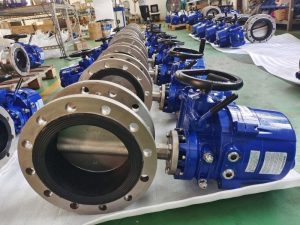
Differences in design and construction
Differences in design and construction between butterfly valves, ball valves, and gate valves can significantly impact their functionality and suitability for specific applications. Butterfly valves are characterized by their lightweight and compact design, featuring a circular disc or vane that rotates around an axis perpendicular to the fluid flow direction to regulate the flow. This design allows for efficient control with a low-pressure drop, making butterfly valves ideal for space-saving applications. Ball valves, on the other hand, consist of a spherical ball with a hole through its center that aligns with the flow path when open. They offer excellent sealing performance and can handle a wide range of pressures and temperatures, making them suitable for high-pressure applications. Gate valves feature a gate or wedge that moves vertically within the valve body to control the fluid flow. This design provides precise flow control and is ideal for applications requiring complete shut-off or full flow, but it is not suitable for throttling purposes.
The construction materials for each valve type may also differ based on application requirements and compatibility with the fluids being handled. Butterfly valves can be made from cast iron, ductile iron, stainless steel, or plastic, while ball valves and gate valves are often constructed from brass, bronze, cast iron, ductile iron, or stainless steel. The choice of material depends on factors such as corrosion resistance, temperature range, and pressure rating. In summary, the design and construction differences between butterfly valves, ball valves, and gate valves contribute to their unique advantages and disadvantages, influencing their suitability for various applications.
Differences in operation
The differences in operation between electric butterfly valve, ball valves, and gate valves stem from their unique design and construction features, which directly influence their functionality and performance in specific applications. Butterfly valves operate by rotating a disc or vane around an axis perpendicular to the fluid flow direction, allowing for quick and efficient control of the flow with a simple quarter-turn motion. This makes butterfly valves ideal for applications where rapid opening and closing are essential. Ball valves, on the other hand, utilize a spherical ball with a hole through its center that aligns with the flow path when open. They require a quarter-turn motion as well, providing fast and reliable shut-off capabilities with excellent sealing performance. Ball valves are suitable for high-pressure applications and can handle a wide range of pressures and temperatures.
Gate valves operate differently, using a gate or wedge that moves vertically within the valve body to control the fluid flow. This linear motion enables precise flow control and makes gate valves ideal for applications requiring complete shut-off or full flow. However, gate valves are not suitable for throttling purposes, as their design may cause vibration, noise, and potential damage to the valve components when partially opened. Additionally, gate valves typically require more time and effort to open and close compared to butterfly and ball valves due to their multi-turn operation.In summary, the differences in operation between butterfly valves, ball valves, and gate valves contribute to their unique suitability for various applications. Butterfly valves offer rapid and efficient flow control, making them ideal for space-saving applications, while ball valves provide excellent sealing performance and are suitable for high-pressure situations. Gate valves excel in precise flow control and complete shut-off but are not recommended for throttling purposes.
Advantages and disadvantages of each
Each valve type – butterfly, ball, and gate valves – offer distinct advantages and disadvantages that influence their suitability for specific applications. Butterfly valves are known for their compact and lightweight design, making them easy to install and maintain. They provide efficient flow control with a low-pressure drop, contributing to increased energy efficiency. However, they may not be suitable for high-pressure and high-temperature applications and may not provide the same level of sealing performance as other valves, potentially leading to leakage over time.
Ball valves offer excellent sealing performance due to their tight shut-off capabilities, making them ideal for high-pressure and high-temperature applications. They also allow for fast and reliable operation with a simple quarter-turn motion. On the downside, ball valves can be more expensive than butterfly valves and may require more space for installation, making them less suitable for space-constrained applications.
Gate valves excel in precise flow control and complete shut-off, making them suitable for applications that require accurate regulation of fluid flow. They are also capable of handling high pressures and temperatures. However, gate valves are not ideal for throttling purposes, as their design can cause vibration, noise, and potential damage when partially opened. Additionally, they typically require more time and effort to open and close compared to butterfly and ball valves due to their multi-turn operation.In summary, the choice between butterfly, ball, and gate valves should consider each valve’s unique advantages and disadvantages, taking into account factors such as design, functionality, cost, and suitability for specific applications. Each valve type serves different purposes and performs optimally in different situations, depending on their inherent characteristics.
Choosing between the two
Choosing between butterfly valves and other types of valves, such as ball or gate valves, requires a thorough understanding of the specific application’s requirements, as well as the advantages and disadvantages each valve type offers. Factors to consider include design, functionality, cost, pressure and temperature ratings, and compatibility with the fluid being handled. Butterfly valves are ideal for situations where space-saving, cost-effectiveness, and efficient flow control are essential, making them popular in industries like water treatment, food and beverage, pharmaceuticals, and HVAC systems. However, they may not be suitable for high-pressure and high-temperature applications, which would be better served by ball or gate valves.
Ball valves are known for their exceptional sealing properties and ability to handle a wide range of pressures and temperatures, making them suitable for high-pressure applications in industries such as oil and gas, chemical processing, and power generation. Gate valves, on the other hand, are ideal for applications that require precise flow control and complete shut-off, such as water supply and wastewater treatment.Ultimately, the choice between butterfly valves and other valve types should be based on a careful evaluation of the specific application’s requirements and constraints, taking into account factors such as design, functionality, cost, and suitability for the intended use. By considering these aspects, one can make an informed decision that ensures optimal performance, reliability, and longevity in the chosen application.
Conclusion
In the world of fluid flow control, gate valve and butterfly valve are two popular choices, each offering their unique advantages and disadvantages. As we’ve explored throughout this blog post, understanding the key differences between these two valve types is essential when selecting the most suitable option for a specific application. Gate valve are characterized by their ability to provide precise flow control and complete shut-off, making them ideal for applications requiring accurate regulation of fluid flow. They can handle high pressures and temperatures, and their linear motion ensures minimal wear on valve components. However, gate valves are not suitable for throttling purposes and may require more time and effort to open and close due to their multi-turn operation.
On the other hand, butterfly valves offer efficient flow control with a low-pressure drop, thanks to their compact and lightweight design. The simple quarter-turn motion for opening and closing makes them an attractive option for applications where rapid operation is essential. Additionally, butterfly valves are often more budget-friendly than gate valves, making them a popular choice for cost-conscious projects.However, butterfly valves may not be suitable for high-pressure and high-temperature applications, as they do not provide the same level of sealing performance as gate valves or ball valves. Moreover, the choice of material for butterfly valves should be carefully considered to ensure compatibility with the fluid being handled and resistance to corrosion and wear.
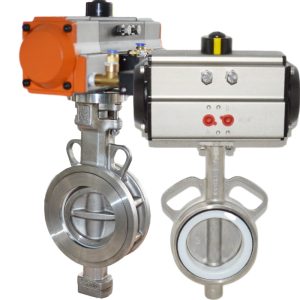
When choosing between gate valves and lug butterfly valve, it is crucial to evaluate the specific application’s requirements and constraints. Factors such as design, functionality, cost, pressure and temperature ratings, and compatibility with the fluid being handled must be taken into account. By doing so, you can make an informed decision that ensures optimal performance, reliability, and longevity in your chosen application.In conclusion, both gate valves and butterfly valves have their unique advantages and disadvantages. The key to making the right choice lies in understanding the specific requirements of your application and weighing the pros and cons of each valve type. By carefully considering these factors, you can select the most appropriate valve that offers the best balance of performance, cost-effectiveness, and reliability for your fluid flow control needs.
Recap of key differences
To recap the key differences between gate valve and wafer butterfly valve, it’s essential to consider their design, functionality, and suitability for specific applications. Gate valves are characterized by their precise flow control and complete shut-off capabilities, making them ideal for situations requiring accurate fluid flow regulation. They can handle high pressures and temperatures, but their multi-turn operation may make them slower to open and close compared to butterfly valves. Butterfly valves, on the other hand, offer efficient flow control with a low-pressure drop due to their compact and lightweight design. They require only a simple quarter-turn motion for operation, making them suitable for applications requiring rapid opening and closing. However, they may not provide the same level of sealing performance as gate valves and might not be suitable for high-pressure and high-temperature applications. By understanding these key differences, you can make an informed decision when choosing the most appropriate valve for your specific needs.
Importance of selecting the appropriate valve for specific applications
Selecting the appropriate valve for specific applications is crucial, as it directly affects the performance, reliability, and durability of the fluid flow control system. The right valve ensures optimal efficiency, minimizes maintenance costs, and reduces the risk of leaks or system failures. To make an informed decision, it’s essential to carefully evaluate each application’s unique requirements, considering factors such as design, functionality, pressure and temperature ratings, and compatibility with the fluid being handled. By understanding the key differences between various valve types and weighing their respective advantages and disadvantages, you can choose the most suitable valve that best meets your needs. Ultimately, selecting the most appropriate valve for your application leads to a more efficient, reliable, and cost-effective fluid flow control system, ensuring its long-term success and sustainability.

Final thoughts
In conclusion, the selection of the appropriate valve for specific applications plays a critical role in the overall success and effectiveness of fluid flow control systems. It’s essential to thoroughly understand the unique characteristics, advantages, and disadvantages of various valve types, such as gate valves and butterfly valves, in order to make an informed decision. By carefully considering factors like design, functionality, pressure and temperature ratings, and compatibility with the fluid being handled, you can ensure that your chosen valve contributes to a more efficient, reliable, and cost-effective system. As final thoughts, it’s important to remember that investing time and effort into selecting the right valve not only optimizes system performance but also enhances its long-term sustainability and minimizes potential issues, leading to a successful and enduring fluid flow control solution.




